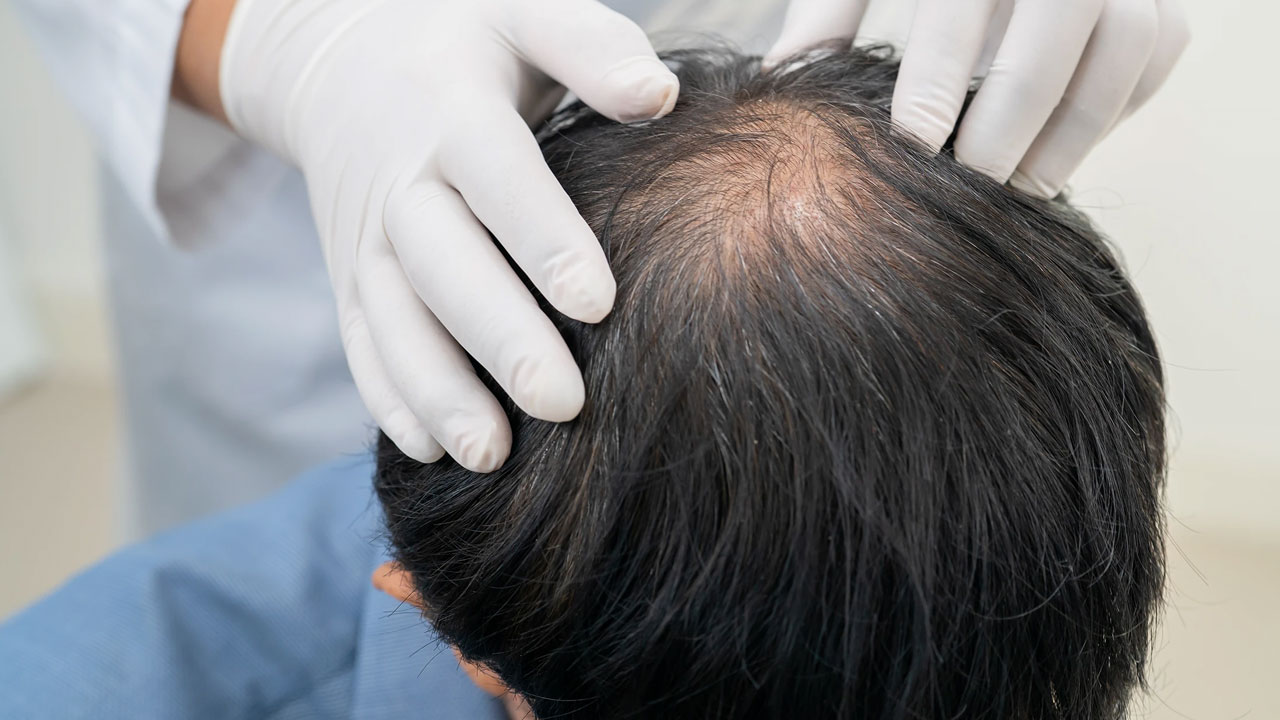

Causes of Male Pattern Baldness
The main reason behind this condition is the effect of DHT on hair follicles. It shortens the hair growth cycle and makes the hair thinner. Family history plays a major role—if your father or grandfather experienced baldness, you are more likely to have it too. Other factors such as aging, stress, smoking, and poor diet can make it worse.
Early Signs to Watch For
Receding hairline forming an ‘M’ shape
Thinning hair at the crown area
More hair fall during combing or showering
Slower regrowth after hair shedding
Dermatologists use the Norwood-Hamilton scale to track baldness stages. Detecting hair loss in the early stages gives a better chance for treatment success.
Proven Treatment Options
1. Minoxidil (Topical): A safe and effective lotion that helps in hair regrowth. Regular use for 3–6 months shows visible improvement.
2. Finasteride (Oral): A tablet that reduces DHT levels and slows down hair loss. However, it should only be taken under a doctor’s advice.
3. Hair Transplant: For those with advanced baldness, transplant surgery can help restore hair permanently.
4. PRP Therapy and Laser Treatments: These modern methods can support regrowth when combined with medical treatments.
Lifestyle Tips
Quit smoking and manage stress.
Maintain a healthy diet rich in vitamins and proteins.
Sleep well and take care of scalp hygiene.
Male pattern baldness can’t always be fully reversed, but early action can stop it from worsening. Consult a dermatologist to start the right treatment plan. The sooner you act, the better your chances of keeping your hair healthy and strong.